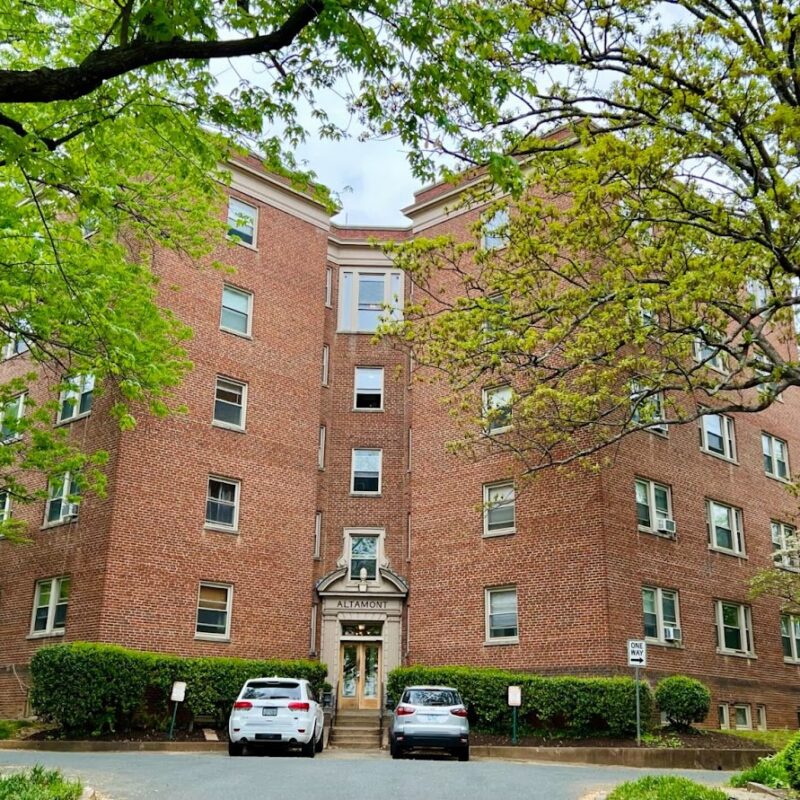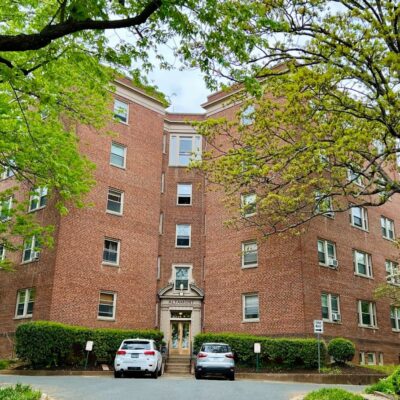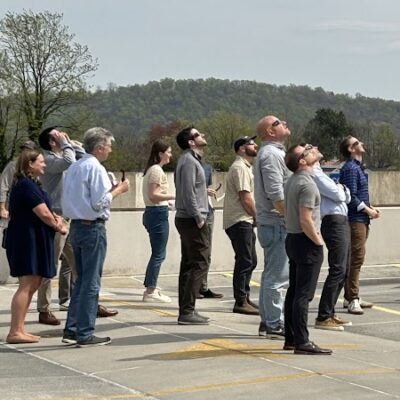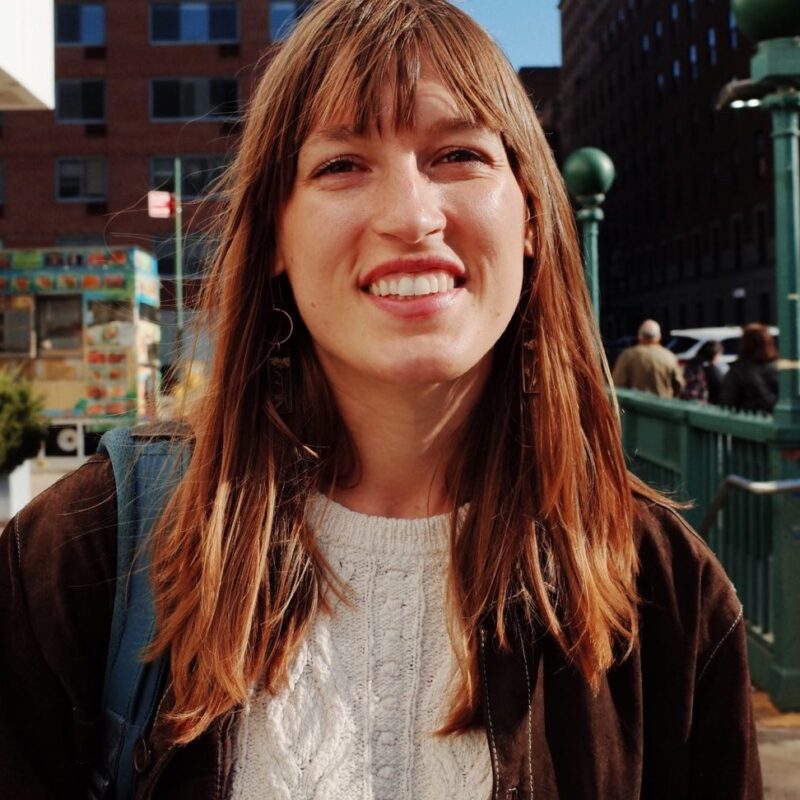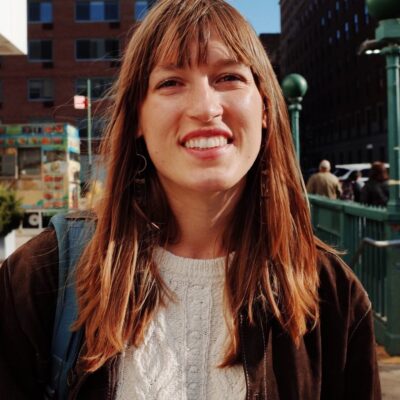The results of last November’s local and state elections were fuel on the ever-burning fire that is the debate over the Western Bypass. With a new anti-road majority on the Albemarle County Board of Supervisors—which appoints crucial voting members to the purse string-holding Metropolitan Planning Organization—and the departure of a governor and transportation secretary who were the driving force behind the revival of the project in 2011, the local anti-Bypass contingent has been shouting louder, calling the road a poorly planned, polluting waste of money.
As VDOT continues to wait for the Federal Highway Administration’s nod, supporters of the Bypass are adding their voices to the reignited argument. A newly formed 501c4 group, Bypass 29 Now, has waded into the fray, contradicting arguments over air quality and pointing to a new UVA-administered survey that shows more than 60 percent of locals favor a bypass around Charlottesville.
Earlier this month, the Albemarle County Board of Supervisors voted to turn its ear to the taxpayers and hold a public hearing on the Bypass, which starts at 4pm today, Wednesday, February 19, in Lane Auditorium at the County Office Building.
The decision chagrined the board’s sole pro-Bypass member, Republican Ken Boyd; “How many issues are we going to revisit because you all weren’t here when we made the decision?” he asked his fellow supervisors. It will be the first big public weigh-in on the road since VDOT’s mandated open comment session in the summer of 2012, and new Rio District rep Diantha McKeel has already penned a resolution—and is prepared to move for a vote on it—calling on Governor Terry McAuliffe and his transportation secretary to kill the project, should public opinion go that way.
We wanted to hear from you ahead of what will likely be a marathon meeting, so we asked for your essays—and we got a bunch. Here are a few of the responses.—Graelyn Brashear
Click the following image to see a comparison of two very different opinion polls on the Bypass:
Bill Tucker, Charlottesville:
“I am a real estate attorney with over 40 years experience in Charlottesville Albemarle. In the past two years, numerous real estate agents have told me about the decreased property values and loss of sales in the seven neighborhoods affected by the proposed Western Bypass.
In all the discussion over the $300 million Western Bypass—though it does not bypass our growing community—no one has really connected the loss of housing value with a high-speed, 6.2-mile supposed cut-through. As my experience illustrates, we’re losing time, money, and opportunity due to the desire of a handful to force the rest of us to build a highway that doesn’t accomplish its intended goals.
The former editor of Virginia Business calls this highway “The Road to Wealth Destruction” and the Taxpayer for Common Sense proclaims it one of the eight worst projects in the entire nation. Nearness to a four-lane highway decreases housing values “from 10 to 15 percent,” appraisers in Tennessee and Oklahoma note.
There is one area in which nearness to a major highway increases property values, and that is commercial property. Businesses along highways make more money, reflected in property statistics everywhere. In Albemarle, proposed is a highway past approximately 1,500 homes and within a quarter mile of six schools, instead of boosting commercial property values by supporting all the Places29 projects. Building the overpasses at Rio and Hydraulic in Places29, as VDOT originally sequenced first, would save immense residential property value in Albemarle County while increasing commercial value.
Our county’s own plan states: ‘The [bypass] project does not meet community or regional needs, and has been determined to be too costly for the transportation benefits to be gained. The transportation goals of the Bypass can be more effectively realized with improvements to the existing Route 29 corridor.'”
Dorothy C. Doyle, Charlottesville:
“It is heartening to read that indeed there are many local people who indeed want the Bypass, but whose voices have not been heard recently. It seems The Daily Progress gets flooded with letters only from Albemarle County folks who are opposed to it. This is of course reasonable, since the planned Bypass is mapped to go through primarily county land. And it isn’t hard to imagine that many, if not most, of the folks writing these letters are residents of the county lands surrounding the proposed Bypass.
My guess is that a stronger motive than caring for the air quality surrounding schools near the proposed route is some version of (as one pro-bypass resident of the Boar’s Head area called) the NIMBY “not-in-my-backyard” syndrome. I viewed ad nauseam the ads on NBC 29 posted by the Bypass Truth Coalition, which in my opinion exploited the sweet faces of school children for their cause. My letter in November asked them one simple question: “How many of you who are opponents of the Bypass have to drive daily, southbound, on 29 between Rio Rd and the 250 West access ramp at Best Buy?”
I believe that if even only half of the anti-bypass folks drove the above-mentioned stretch of 29, these same voices wouldn’t be so stridently opposed to the road. How many of them have sat behind two or three idled tractor trailers belching out pollution-producing exhaust? And how about those of us who are recipients of this exhaust; are we somehow less in need of quality air than school children along the proposed route?”
John A. Cruickshank, Chair, Piedmont Group of the Sierra Club:
“The health and welfare of over 4,000 children will be put at risk by the construction of the Route 29 Bypass. These are the children who attend the six schools that lie within a quarter mile of this proposed highway. These young people will risk exposure to traffic noise and air pollution 6.5-plus hours a day, 180 days a year. Some students could be breathing this air from Kindergarten through 12th grade.
Despite the claims of Bypass promoters, recent studies have documented a strong connection between childhood illnesses and exposure to automobile and truck emissions. The American Lung Association’s “State of the Air 2013” report cites a panel of expert scientists that looked at over 700 studies examining the health effects of traffic pollution. “They concluded that traffic pollution causes asthma attacks in children, and may cause a wide range of other effects including the onset of childhood asthma, impaired lung function, premature death and death from cardiovascular diseases, and cardiovascular morbidity. The area most affected, they concluded, was roughly 0.2 miles to 0.3 miles from the highway. Children and teenagers are among the most vulnerable—though not the only ones at risk.”
Other studies have linked traffic pollution with childhood cancers, diabetes, learning disabilities, and autism. Local exposure to traffic on a freeway has adverse effects on children’s lung development, which are independent of regional air quality.
Why would a community choose to build a highway so close to these schools? Why would we purposely foul the air our students breathe? We know better now.”
Hank Martin, Albemarle County:
“During the last elections, there aired an ad showing children playing with balloons in the clean air outside of a school. Superimposed were those images of monstrous semi’s belching smoke. It reminded me of the little girl counting daisies before an atomic explosion in an anti-Goldwater ad from the ’60s.
Nevertheless, it cites statistics from a study indicating the negative impact to school children from roads such as the 29 Bypass. What was withheld, and for good reason, was the fact that this study was conducted at a school next to one of the busiest freeways in Los Angles, California. It does not require an excessive amount of knowledge of geography and demographics to be cognizant of the fact that this is quite a different environment than is found presently in Albemarle County. Despite many schools next to Route 29 and 250, there is no indication of health problems with our school children. We will not even bother to mention the daily instances of fleets of school buses sitting beside schools idling as they wait, all expelling the same byproduct that emanates from the exhaust pipes of a semi truck.
Certainly not the least of all is the impact that the current absence of a Bypass has on people. For a half a century I have been witness to the mounting instances of injury, death and property loss that is so regularly prevalent because we, despite all of our flaunted glory of education and intellectual elitism, have a traffic infrastructure that is still basically stuck in the early 20th century. John Adams said that facts are inconvenient things. In this case, in regards to the arguments against the Bypass, they are not only inconvenient, but tragic in their inability to be denied. Statistics record that nearly half of all of the traffic accidents along the entire length of U.S. 29 in the Commonwealth of Virginia occur within the section of road to be bypassed in Albemarle County. First responders and automobile repair shops can testify to the need for this Bypass.”
Scott Vande Pol, Albemarle County:
“If you are a conservative, you should not support the Bypass, because it is the largest abuse of private property rights in our county history.
When VDOT takes your physical property, they may try to rip you off, but a jury of your peers will decide the outcome. If your physical property is not “taken” but a freeway is put immediately next to you, and your property drops 25 to 50 percent in value, you get zip, nada, nothing. You cannot sue. You get unending noise and pollution in your devalued home. You still have to pay your mortgage in full. If you decide you cannot stand living next to a freeway, you must take the loss and your next home will be poorer and smaller.
Maybe you needed that money for your children’s education or your own retirement? Too bad. The state has just stolen the value of your property and taken your peaceful life from you and there is nothing you can do about it. Local residents who are financially devastated by the road and band together in protest are insulted as “NIMBY special interests” by businessmen and politicians who hope to profit from the Bypass.
Are the businessmen and developers pushing this Bypass really for free enterprise or do they just want their enterprise for free (that means you, ‘Free Enterprise Forum’ and ‘Bypass29Now’)? If you are a conservative, ask yourself: What type of conservative am I? Do you pay for what you take or steal if you can?”
Neil Williamson, President, Free Enterprise Forum:
“U.S. 29—it’s not all about us, it’s about U.S.
Back in 1623, English poet John Donne wrote that “No man is an island.” Some 300 years later, a vocal cohort of the Charlottesville and Albemarle populations have a contrary, myopic world view—they believe it is all about us.
This failure to recognize the importance of our symbiotic role in the Commonwealth’s transportation network seemingly leads to faulty logic. There is very little controversy surrounding the need for traffic relief on U.S. 29. The methodology of such relief is in question.
If one believes all traffic is local, then simply improving local roads will improve traffic (this construct ignores freight). If one believes the concern is a lack of multimodality, then the answer is bike lanes and pedestrian bridges (this construct ignores throughput demands). If we think only of ourselves, an expressway with grade separated interchanges may serve our needs (this construct ignores economic dislocation). If we think only of ourselves, we ignore that our stretch of U.S. 29 is the most dangerous portion of the U.S. 29 corridor from North Carolina to Fauquier County.
Fortunately, according to the recent UVA survey (as well as a 2004 Free Enterprise Forum commissioned survey) the vocal cohort is a minority.
The general public has always known the construction of the U.S. 29 Western Bypass will allow for the efficient movement of through traffic around the congestion and create a true “Business 29” to serve the local traffic. All we have to do is build it—it’s all that easy and it’s all that hard.”
Eric H. Schmitz, Albemarle County:
“Routinely referred to as a “Bypass,” it is nothing more than a connector road that avoids a handful of stoplights, and if it were in place today, would reduce through travel time by maybe one to two minutes. From Ashwood Boulevard on the north to Leonard Sandridge Road on the south, we are talking a 5.7 mile, 9-minute drive under normal traffic conditions, and rarely more than 12.
As bid, [winning design-build firm Skanska-Branch] incorporates two signalized at-grade interchanges to anchor the connector road. VDOT found that this actually increased through travel time, and so the first of many redesigns is in the pipeline at an additional cost of millions of dollars.
The oft-published $244 million price tag gives the public the false impression that this is a fixed cost project—pure fiction. The bid design also has tight curves, steep grades, narrow shoulders, minimal guardrails, and absolutely no provisions for sound or visual screening. In other words, it is a low-ball bid, cheap, dangerous, dirty, and unsightly—but politically savvy and expeditious. Either the road design will be upgraded and cost closer to $400 million, or the end result will be a very expensive nuisance.
The No-Pass creates a new nightmare at either terminus: the obvious bottleneck all along the Forest Lakes-Hollymead residential and commercial corridor, already congested; and the capacity-constrained U.S. 29–I-64 interchange, which proponents tell us will handle more traffic due to the ‘convenience’ of this ‘new’ route for commuters from and to the west, east, and south of Albemarle. Having exhausted highway funds into the next decade, this situation is a planned calamity of epic proportions that will make the Hydraulic–U.S. 29–250 Bypass triangle look like a walk in the park by comparison.
The blunt fact is this is a poorly planned, ill-timed, inadequately designed financial boondoggle. And as sold, it is a proverbial pig in a poke. What is billed as a ‘bypass’ is really just a headache. There is no financial justification for such an obvious engineering blunder.”
Susanna C. Spencer, Madison County:
“I live in Madison and I oppose the Route 29 Bypass.
I have a lot of time to ponder transportation and land-use issues when I’m waiting at the increasing number of stoplights between Ruckersville and Charlottesville. But I cannot figure out the reasoning for what passes for planning around here.
Do the people who approve developments and roads get around by hovercraft? Maybe they live elsewhere. Perhaps they like sitting in traffic. Why do they emulate the congestion-making decisions other jurisdictions have made? Why can’t Virginians look at the “bigger picture” rather than each jurisdiction having the right to approve development based on their local desires? Do they have hidden motives?
Why are some people so intent on building a new bypass that seems to closely follow Earlysville Road, already a decent “back way” into Charlottesville, and does nothing to avoid the abundant development, congestion, and new lights between Hollymead and Ruckersville?
From what I’ve read, the overpasses at Rio and Hydraulic make a lot of sense. That, combined with synchronizing traffic lights, would improve the traffic flow and cost much less money.”

